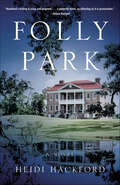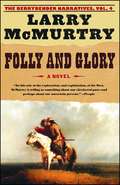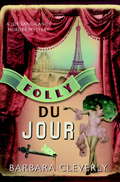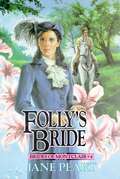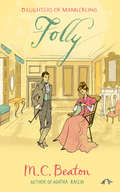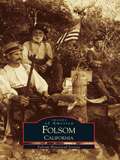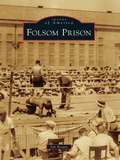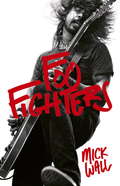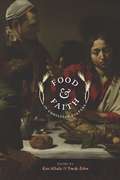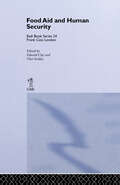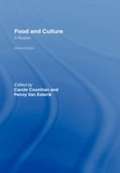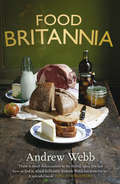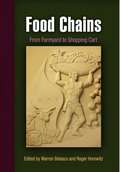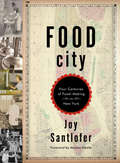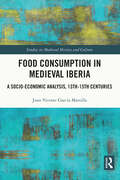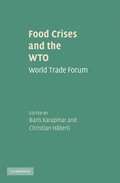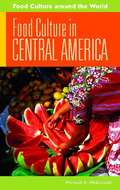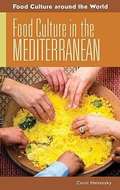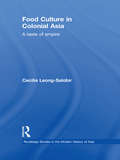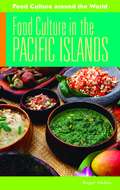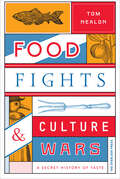- Table View
- List View
Folly Park: A Novel
by Heidi HackfordFans of Surviving Savannah by Patti Callahan, The Book of Lost Friends by Lisa Wingate, and Almost Sisters by Joshilyn Jackson will enjoy Folly Park.Are we ever able to escape the past? Should we be allowed to?Though deeply ashamed of her slaveholding heritage, Temple Preston’s sense of duty and bittersweet memories tie her to Folly Park, her family’s crumbling ancestral plantation in Virginia. Now a cash-strapped tourist attraction, Folly Park was once the home of Confederate General Thomas Temple Smith, a southern war hero who died under mysterious circumstances. Temple is pursuing a plan to secure the house museum’s future when her summer research assistant, a Black PhD student, uncovers a remarkable secret: the general’s wife gave birth to a biracial baby while he was away fighting in the Civil War. This discovery turns Temple’s quiet, insulated life upside down, and—along with further revelations about the past that come to light in the ensuing weeks—fuels the growing tension in her hometown as a Black activist and Temple’s own race-baiting brother square off in a local campaign for mayor. Faced with threats and betrayal, Temple discovers who she really is—and how much she’s willing to lose to tell the truth.
Folly and Glory: A Novel
by Larry McmurtryIn this brilliant saga -- the final volume of The Berrybender Narratives and an epic in its own right -- Larry McMurtry lives up to his reputation for delivering novels with "wit, grace, and more than a hint of what might be called muscular nostalgia, fit together to create a panoramic portrait of the American West"(The New York Times Book Review). As this finale opens, Tasmin and her family are under irksome, though comfortable, arrest in Mexican Santa Fe. Her father, the eccentric Lord Berrybender, is planning to head for Texas with his whole family and his retainers, English, American, and Native American. Tasmin, who would once have followed her husband, Jim Snow, anywhere, is no longer even sure she likes him, or knows where to go to next. Neither does anyone else -- even Captain Clark, of Lewis and Clark fame, is puzzled by the great changes sweeping over the West, replacing red men and buffalo with towns and farms. In the meantime, Jim Snow, accompanied by Kit Carson, journeys to New Orleans, where he meets up with a muscular black giant named Juppy, who turns out to be one of Lord Berrybender's many illegitimate offspring, and in whose company they make their way back to Santa Fe. But even they are unable to prevent the Mexicans from carrying the Berrybender family on a long and terrible journey across the desert to Vera Cruz. Starving, dying of thirst, and in constant, bloody battle with slavers pursuing them, the Berrybenders finally make their way to civilization -- if New Orleans of the time can be called that -- where Jim Snow has to choose between Tasmin and the great American plains, on which he has lived all his life in freedom, and where, after all her adventures, Tasmin must finally decide where her future lies. With a cast of characters that includes almost every major real-life figure of the West,Folly and Gloryis a novel that represents the culmination of a great and unique four-volume saga of the early days of the West; it is one of Larry McMurtry's finest achievements.
Folly du Jour (Detective Joe Sandilands #7)
by Barbara CleverlyPraise for Barbara Cleverly: "Spectacular and dashing, spellbinding." -The New York Times Book Review. "Smashing ... marvelously evoked." -Chicago Tribune. "A historical mystery that has just about everything." -Denver Post. "Cleverly maintains the high standards set by earlier Sandilands tales, blending a sophisticated whodunit with full-blooded characters and a revealing look at her chosen time and place." -Publishers Weekly (starred). "Atmospheric ... intricately plotted." -Kirkus Reviews. "Evocative narrative, sensitive characterizations, artful dialogue, and masterly plottings." -Library Journal. "Cleverly combines a colorful historical setting with a complex plot and well-developed characters."-Booklist. "Delightfully surprising."-Mystery News. This seventh book in the Joe Sandilands murder mystery series is set at the Folies-Bergre, Paris, in December 1926. Joe hurries to the assistance of an old friend who has been arrested for murder there. In a cell at the Quai des Orfvres, he meets with Sir George Jardine, still in the evening clothes stained with the blood of the dead man. The only other witness, a blonde who was sharing the victim's box, has vanished. Joe receives assistance from an entirely unexpected quarter--Francine, a young usherette, clawing her way into the world of the Paris Music Hall. She becomes Joe's guide through this treacherous place, where Joe is sure the killer is lurking. Barbara Cleverly was born in northern England, graduated from Durham University, and now lives in Cambridge. Her debut, The Last Kashmiri Rose, was a New York Times Notable Book of 2002.
Folly's Bride: Book 4 (Brides of Montclair #4)
by Jane Peart"Sara! You must come out! You're wanted downstairs right away," Lucie hissed through the keyhole on the locked bedroom door. "Stepmama is furious and Father has sent word that he's coming home early from the Exchange. She says he's in a rage over what you've done!" "I haven't done anything! It's not my fault if those two hotheads decide to fight a duel!" came her sister's indignant voice from the other side of the door. "Oh, Sara, please!" Lucie pleaded. "Father will be here any minute. You must do as you're told!" She shook her head and sighed ruefully, "You're stubborn, Sara." "No," denied Sara. "I am strong." Thus begins the bittersweet story of beautiful Sara Leighton, the headstrong heroine of Folly's Bride, the fourth in the Brides of Montclair series. As with her predecessors, happiness does not come painlessly to this newest bride of Montclair. Her unusual beauty and her independent spirit places her on a collision course with romance, frustration, disappointment, and finally, true love.
Folly: A Novel Of Regency England - Being The Fourth Volume Of The Daughters Of Mannerling (The Daughters of Mannerling Series #4)
by M.C. BeatonThe haughty Beverley family is obsessed with regaining Mannerling, the exquisite seventeenth-century mansion gambled away by their now-deceased father, Sir Beverley. Three of the six Beverley daughters have failed to win back their ancestral estate - settling for love matches over mere bricks and mortar. Now it is Rachel's turn to woo the latest eligible bachelor-in-residence, handsome widower Charles Blackwood. Yet her plan to win the autocratic Charles almost comes to naught: At their first meeting, Rachel forgets herself and admonishes Charles for neglecting his two small children. The antics of young Beth and Mark Blackwood successfully throw Charles and Rachel together, but does Rachel love Charles for himself or for Mannerling?
Folsom
by Folsom Historical SocietyWith the nearby discovery of gold in 1848, Folsom, which began as a remote camp for trappers and traders, quicklybecame a prosperous mining town in the foothills of the Sierra Mountains. When the railroad arrived, Folsom boomed, serving as a transportation hub and gateway to the gold country. Downtown's Sutter Street became a busy center for merchants, hotels, and commerce, as well as the terminus for the Pony Express. Encompassing 135 years, this book celebrates Folsom's diverse heritage from its beginnings as "Granite City" to the recent growth attributed to the influx of high-tech corporations. Over two hundred images illustrate its history, including personal glimpses of family and home life, churches, schools, holiday celebrations, local culture, politics, and social organizations, to photographs of well-known landmarks and institutions such as the Cohn House, Sutter Street, the Folsom Powerhouse, the railroad, and of course, the infamous Folsom Prison.
Folsom
by Roberta Kludt LongModern Folsom really began in the 1960s. Folsom was a planned town from the beginning in 1856 and initially had housing and businesses for workers at the Sacramento Valley Railroad depot, turntable, and maintenance shops. During the remaining decades of the 19th century to the mid-20th century, Folsom's fortunes fluctuated as it served as a hub for gold recovery, the railroad, Folsom Prison, hydropower, and agriculture. Folsom residents incorporated their town in 1946. Anticipating the changes that would come with construction of a large dam on their border, they wanted local control. From the 1960s to the present, Folsom's story continues as a tale about its people. Their dedication has revitalized the historic district, brought innovative employment, created arts and entertainment centers, and provided high-quality education, civic services, and exceptional recreation choices. Many of them contributed photographs and text to this book.
Folsom Prison (Images of America)
by Jim BrownFolsom Prison is California's second-oldest prison, dating back to 1880. In the decades following the Gold Rush, it housed some of the state's most notorious prisoners in stone, dungeon-like cells behind solid-metal doors; was the first prison with electric power; and for many years provided labor for various state projects, including construction, fabrication, and printing of license plates. Thrust into the public consciousness in the 1960s by high-profile performances from country music's Johnny Cash, the prison remains a notorious and legendary institution. The variety of offenders housed at Folsom are incarcerated for a large gamut of criminal behavior, and the California Department of Corrections has been dedicated to rehabilitation efforts throughout the facility's long history.
Folter in Diktaturen und Demokratien: Eine Untersuchung von Funktions- und Wirkungsweise von Folter in politischen Systemen
by Linda WimmerDie vorliegende Arbeit analysiert die mögliche Funktions- und Wirkungsweise von Folter in politischen Systemen und geht vor dem Hintergrund des de facto Verbots der Folter im Völkerrecht der Frage nach, welchen Zweck die Folter im 21. Jahrhundert in Demokratien und Diktaturen eigentlich einnimmt. Die Autorin arbeitet die verschiedensten interdisziplinären Aspekte der Folter heraus. So wird die Gundlage für das theoretische Konstrukt eines Funktions- und Wirkungskataloges gebildet. Nach einem Überblick über die Folter im Laufe der Jahrhunderten und möglicher Sonderformen der Folter wird dieser Katalog anhand von sechs Länderbeispielen analysiert. Drei der Beispiele fallen dabei auf das demokratische Sprektrum der politischen Systeme wie die USA, Spanien und Israel. Die anderen drei nehmen Diktaturen des 21. Jahrhundert in den Fokus (China, Irak und Nigeria).
Fontana
by John Charles Anicic Jr.The self-proclaimed "City of Innovation" has a great tradition of reinventing itself. Today's Fontana was once known as "Rancho de San Bernardino." The first recorded owner, Don Antonia Maria Lugo, passed the land down to his sons, and in 1851, the Lugo brothers sold their stake to Mormon settlers, who soon relocated to Utah. Various agricultural developers, including A.B. Miller, saw potential in the land, changing its name to "Fontana" from its earlier railroad name "Rosena." But citrus and grain were not the main exports for long. During World War II, the city switched gears to become an industrial powerhouse as Southern California's leading steel producer. At the junction of Interstates 10 and 15, modern Fontana is a vital nexus of transportation and commerce, with the legendary Route 66 passing through its well-preserved downtown district and Route 99 through its southern boundary.
Foo Fighters
by Mick WallEveryone from Sir Paul McCartney and Jimmy Page to Queens of the Stone Age now relishes the chance to share a stage with Dave Grohl and his legendary Foo Fighters. The question is: why? Musical depth? Not really. Major success? Well, yes. Despite no longer shifting albums in the same quantity as they did twenty years ago, this band can still fill stadiums the world over (when Dave's not breaking his leg, of course).Long before Kurt Cobain blew his brains out in 1994, Dave Grohl was planning for a life after Nirvana. The unflinching bright sunlight to Cobain's permanent midnight darkness, Grohl had come from a similar broken home to his erstwhile band leader, but came out of the experience differently - brimming with positivity and a shrewd grasp of opportunities in the music industry.Did Grohl merely take the sonic blueprint of Nirvana and embellish it with a more life-affirming pop sheen? Of course he did. Every band in America that sold over a million records in the post-grunge 90s did the same. The difference was that Grohl had real credibility. And he knew it.With exclusive testimony from true insiders (including Krist Novoselic, Grohl's bass-playing partner in Nirvana, ex-girlfirends, record company executives, tour photographers and confidantes), this book is an exploration of the real story behind Grohl and the Foo Fighters - the only serious literary biography of the group and its leader, one of the most famous and critically bulletproof rock figures of the 21st century.
Food & Faith in Christian Culture
by Ken Albala Trudy EdenWithout a uniform dietary code, Christians around the world used food in strikingly different ways, developing widely divergent practices that spread, nurtured, and strengthened their religious beliefs and communities. These never-before published essays map the intersection of food and faith over the past five centuries, charting the complex relationship between religious eating habits and politics, social structure and culture. Theoretically rich and full of engaging portraits, essays consider the rise of food buying and consumerism in the fourteenth century, the Reformation ideology of fasting and its resulting sanctions against sumptuous eating, the gender and racial politics of sacramental food production in colonial America, and the struggle to define “enlightened” Lenten dietary restrictions in early modern France. Essays on the nineteenth century explore the religious implications of wheat growing and breadmaking among New Zealand’s Maori population and the revival of the Agape meal, or love feast, among American brethren in Christ Church. Twentieth-century topics include the metaphysical significance of vegetarianism, the role of diet in Greek Orthodoxy, American Christian weight loss programs, and the practice of silent eating rituals among English Benedictine monks. Two essays introduce the volume, with one explaining the important themes tying all the essays together, and the other surveying food’s part in developing and disseminating the teachings of Christianity and its tangible embodiment of the experience of faith.
Food (Look At This!)
by Ifeoma OnyefuluPhotographed in Mali by a multi-award-winning author, this is a unique and culturally diverse word book, with lots to look at and talk about. Mango, rice, plantain, okra...
Food Aid and Human Security (Routledge Research EADI Studies in Development #No. 24)
by Olav Schram Stokke Edward ClayFood aid is historically a major element of development aid to support longer-term development, and the primary response to help countries and peoples in crisis. This examination of food aid focuses in particular on institutional questions.
Food And Culture: A Reader
by Carole Counihan Penny Van EsterikFood and Culture: A Reader , is a solidly established classroom and reference text for scholars and students across the humanities and social sciences. It has been assigned in courses in anthropology, cultural studies, folklore, food studies, history, literature, philosophy, sociology, archeology, American studies, and more. Food and Culture remains significant because it demonstrates the centrality of cultural anthropology to the study of food. It is unique in providing an interdisciplinary collection of classic and cutting-edge articles in the field of food and culture studies that combine theory with ethnographic and historical data.
Food Britannia
by Andrew WebbBritish food has not traditionally been regarded as one of the world's great cuisines, and yet Stilton cheese, Scottish raspberries, Goosnargh duck and Welsh lamb are internationally renowned and celebrated. And then there are all those dishes and recipes that inspire passionate loyalty among the initiated: Whitby lemon buns and banoffi pie, for example; pan haggerty and Henderson's relish. All are as integral a part of the country's landscape as green fields, rolling hills and rocky coastline. In Food Britannia, Andrew Webb travels the country to bring together a treasury of regional dishes, traditional recipes, outstanding ingredients and heroic local producers. He investigates the history of saffron farming in the UK, tastes the first whisky to be produced in Wales for one hundred years, and tracks down the New Forest's foremost expert on wild mushrooms. And along the way, he uncovers some historical surprises about our national cuisine. Did you know, for example, that the method for making clotted cream, that stalwart of the cream tea, was probably introduced from the Middle East? Or that our very own fish and chips may have started life as a Jewish-Portuguese dish? Or that Alfred Bird invented his famous custard powder because his wife couldn't eat eggs?The result is a rich and kaleidoscopic survey of a remarkably vibrant food scene, steeped in history but full of fresh ideas for the future: proof, if proof were needed, that British food has come of age.
Food Chains
by Roger Horowitz Warren BelascoIn recent years, the integrity of food production and distribution has become an issue of wide social concern. The media frequently report on cases of food contamination as well as on the risks of hormones and cloning. Journalists, documentary filmmakers, and activists have had their say, but until now a survey of the latest research on the history of the modern food-provisioning system--the network that connects farms and fields to supermarkets and the dining table--has been unavailable. In Food Chains, Warren Belasco and Roger Horowitz present a collection of fascinating case studies that reveal the historical underpinnings and institutional arrangements that compose this system.The dozen essays in Food Chains range widely in subject, from the pig, poultry, and seafood industries to the origins of the shopping cart. The book examines what it took to put ice in nineteenth-century refrigerators, why Soviet citizens could buy ice cream whenever they wanted, what made Mexican food popular in France, and why Americans turned to commercial pet food in place of table scraps for their dogs and cats. Food Chains goes behind the grocery shelves, explaining why Americans in the early twentieth century preferred to buy bread rather than make it and how Southerners learned to like self-serve shopping. Taken together, these essays demonstrate the value of a historical perspective on the modern food-provisioning system.
Food City: Four Centuries of Food-Making in New York
by Marion Nestle Joy SantloferFrom the breweries of New Amsterdam to Brooklyn’s Sweet’n Low, a vibrant account of four centuries of food production in New York City. New York is hailed as one of the world’s “food capitals,” but the history of food-making in the city has been mostly lost. Since the establishment of the first Dutch brewery, the commerce and culture of food enriched New York and promoted its influence on America and the world by driving innovations in machinery and transportation, shaping international trade, and feeding sailors and soldiers at war. Immigrant ingenuity re-created Old World flavors and spawned such familiar brands as Thomas’ English Muffins, Hebrew National, Twizzlers, and Ronzoni macaroni. Food historian Joy Santlofer re-creates the texture of everyday life in a growing metropolis—the sound of stampeding cattle, the smell of burning bone for char, and the taste of novelties such as chocolate-covered matzoh and Chiclets. With an eye-opening focus on bread, sugar, drink, and meat, Food City recovers the fruitful tradition behind today’s local brewers and confectioners, recounting how food shaped a city and a nation.
Food Consumption in Medieval Iberia: A Socio-economic Analysis, 13th-15th Centuries (Studies in Medieval History and Culture)
by Juan Vicente García MarsillaFrom the banquets of kings and nobles to the daily struggle for the subsistence of the poor, food was already much more than a biological necessity in the Middle Ages: it was a social phenomenon full of meaning. In this book all the implications and meanings that food had on the Iberian Peninsula between the 13th and 15th centuries are analysed. Historical assessment of the region is particularly rewarding because of the quantity and variety of historical sources, and because of the coexistence in medieval Iberia of the three great monotheistic religions, Christianity, Judaism and Islam. Taking both economic and sociological perspectives, every aspect of food is analysed, from the commercialization of food production to its consumption, and from the evolution of culinary techniques to table manners.
Food Crises and the WTO
by Baris Karapinar Christian HäberliThe food and financial crises of 2008 and 2009 have pushed millions more people into poverty and hunger, while changing the parameters of international trade. Both crises have also challenged the fundamentals of WTO rules regulating agriculture, which had been designed to combat trade distortions due to artificially low-priced food commodities. This collection of essays examines to what extent the multilateral trading system contributes to food security in today's volatile markets. Bringing together a renowned group of expert economists, lawyers, environmental and development specialists, it offers a fresh and multi-dimensional perspective combining a strong economic analysis with a comprehensive legal assessment of the interface between food security and international trade regulation. Together, the contributions provide concrete policy recommendations on how the WTO could play a positive role in preventing or mitigating future food crises and promote global food security.
Food Culture In Central America
by Michael McdonaldFor high school students and general readers, McDonald (anthropology, Florida Gulf Coast U.) describes the food culture of Central America, with discussion of the region's history, geography, and climate, major foods and ingredients, cooking techniques, typical meals and cuisine in specific areas, eating out, special occasions and festivals, and diet and health, including malnutrition, hunger, anemia, obesity, and food aid programs. Recipes are included. Annotation ©2009 Book News, Inc., Portland, OR (booknews.com)
Food Culture In The Mediterranean
by Carol HelstoskyConsidering the territory from Portugal and Morocco east to Iraq and Turkey as a wildly diverse but single region, Helstory (history, U. of Denver) explores such matters as whether people eat out or at home, how religious rituals differ regarding food preparation, what people of the three desert religions eat on religious holidays, why the same few ingredients are prepared in so many different ways even in the same country, why demonstrating hospitality and good will with food is so important, and whether people still eat locally produced food or American fast-food and prepared food. Annotation ©2009 Book News, Inc., Portland, OR (booknews.com)
Food Culture in Colonial Asia: A Taste of Empire (Routledge Studies in the Modern History of Asia)
by Cecilia Leong-SalobirPresenting a social history of colonial food practices in India, Malaysia and Singapore, this book discusses the contribution that Asian domestic servants made towards the development of this cuisine between 1858 and 1963. Domestic cookbooks, household management manuals, memoirs, diaries and travelogues are used to investigate the culinary practices in the colonial household, as well as in clubs, hill stations, hotels and restaurants. Challenging accepted ideas about colonial cuisine, the book argues that a distinctive cuisine emerged as a result of negotiation and collaboration between the expatriate British and local people, and included dishes such as curries, mulligatawny, kedgeree, country captain and pish pash. The cuisine evolved over time, with the indigenous servants preparing both local and European foods. The book highlights both the role and representation of domestic servants in the colonies. It is an important contribution for students and scholars of food history and colonial history, as well as Asian Studies.
Food Culture in the Pacific Islands
by Roger HadenWritten for students, general readers, and foodies alike, Haden's (gastronomy, history of food and drink, U. of Adelaide, Australia) text provides a solid introduction to the food culture of the 22 diverse Pacific Ocean countries located on some 12,000 islands spread across roughly one-third of the earth's surface. A general introduction is followed by an historical overview of the region, description of major foods and ingredients, cooking techniques and technologies, typical meals, regional specialties, traditional dining practices versus eating out, special foods for special occasions, and diet and health issues. In addition to a map of the region, a timeline of key historical and food-related events, a glossary of terms, and a list of online, video/film, and print resources, the text includes a sampling of traditional recipes. Illustrated with b&w photographs. Annotation ©2009 Book News, Inc., Portland, OR (booknews.com)
Food Fights & Culture Wars: A Secret History of Taste
by Tom NealonIn this eclectic book of food history, Tom Nealon takes on such overlooked themes as carp and the Crusades, brown sauce and Byron, and chillies and cannibalism, and suggests that hunger and taste are the twin forces that secretly defined the course of civilization. Through war and plague, revolution and migration, people have always had to eat. What and how they ate provoked culinary upheaval around the world as ingredients were traded and fought over, and populations desperately walked the line between satiety and starvation. Parallel to the history books, a second, more obscure history was also being recorded in the cookbooks of the time, which charted the evolution of meals and the transmission of ingredients around the world. Food Fights and Culture Wars: A Secret History of Taste explores the mysteries at the intersection of food and society, and attempts to make sense of the curious area between fact and fiction. Beautifully illustrated with material from the collection of the British Library, this wide-ranging book addresses some of the fascinating, forgotten stories behind everyday dishes and processes. Among many conspiracies and controversies, the author meditates on the connections between the French Revolution and table settings, food thickness and colonialism, and lemonade and the Black Plague.
